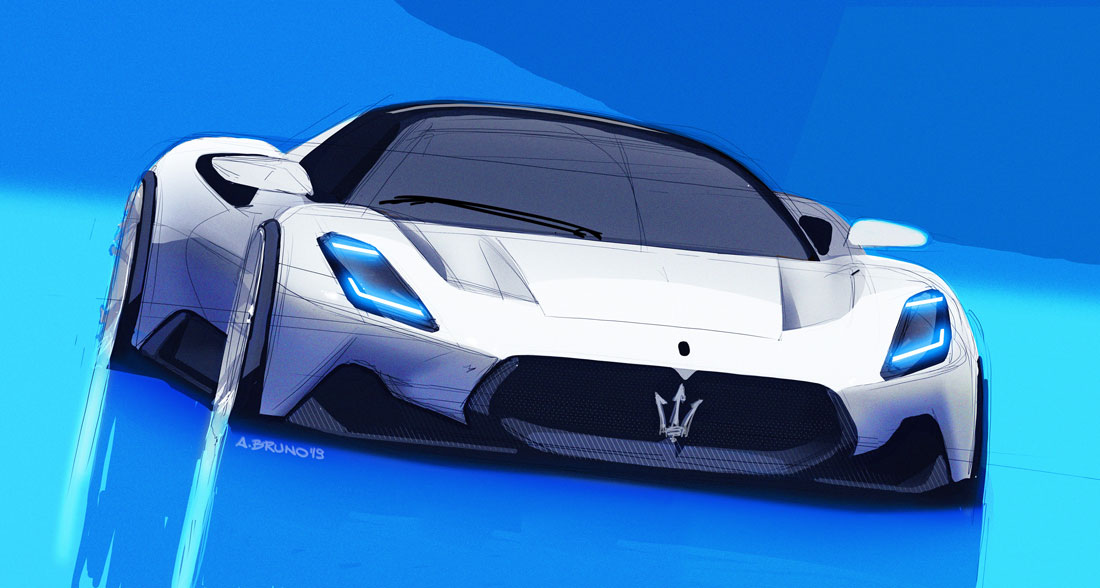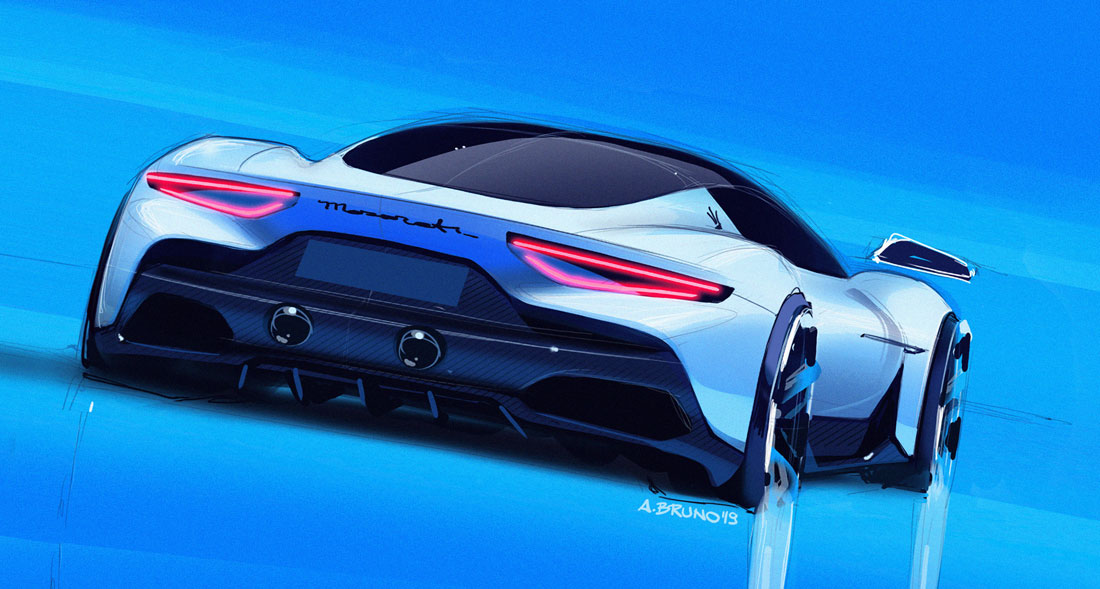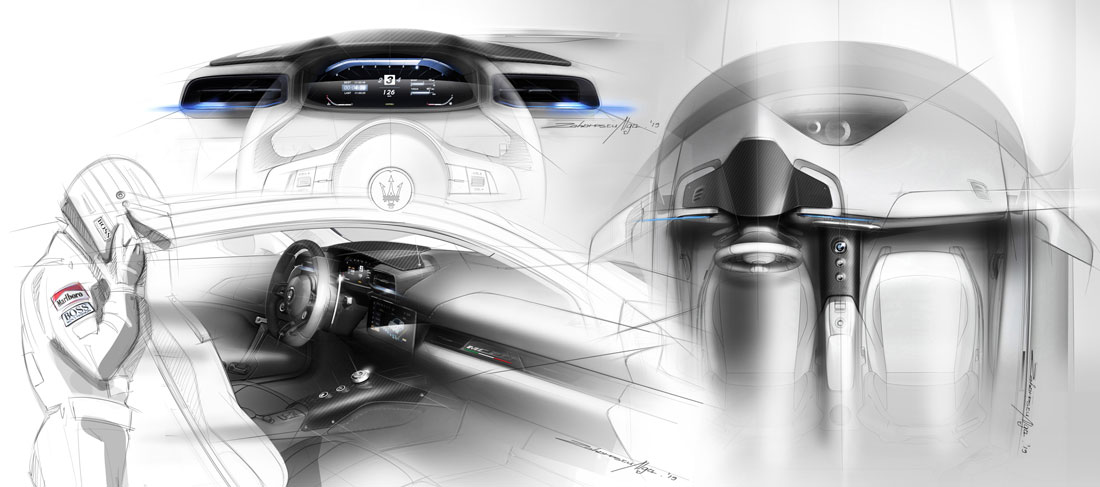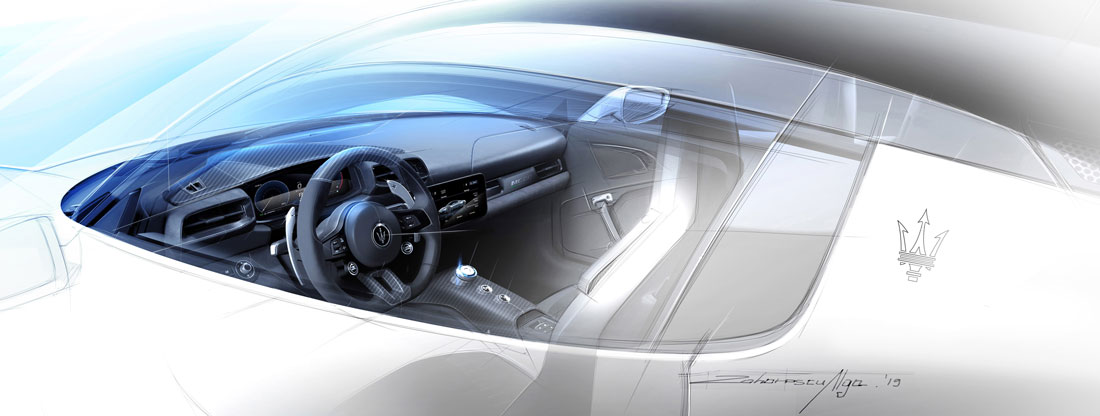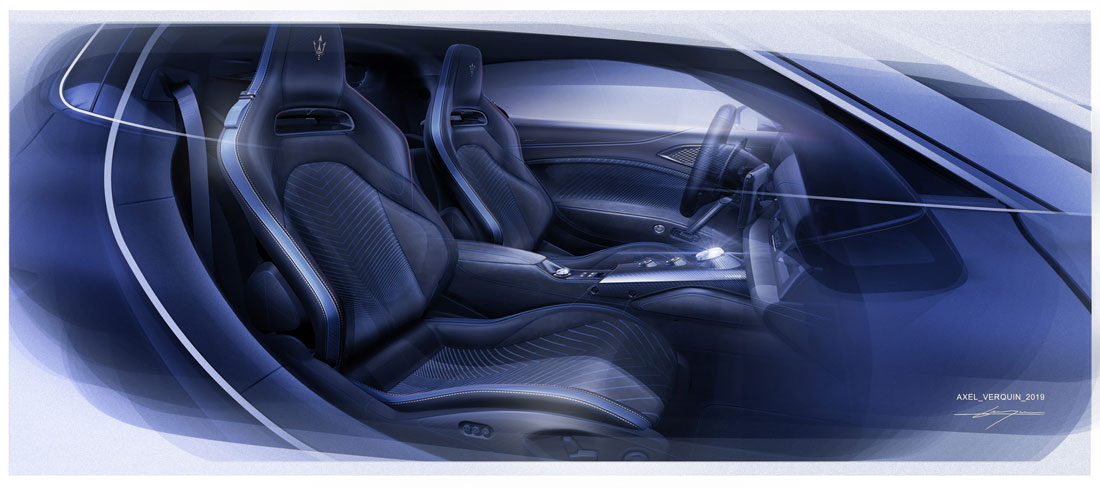Not all automotive brands can have a super sports car as their flagship. “For Maserati, a new era is beginning. Other brands would have marked this step with a luxury sedan, but we looked to our racing roots instead. We have racing DNA that needed to be brought out onto the track again”. It goes without saying that Klaus Busse is very enthusiastic about the MC20, a project that he supervised in his double role as Head of Design for Maserati and for FCA EMEA. It’s the first Maserati with a carbon fibre monocoque, a two-seater coupé with a central engine, a novelty in every element – including the new 3-litre, 630-HP Nettuno V6 engine with Formula 1-derived technology. And the MC20 steals the heart of every sports car fan “with a style that respects the Italian school of formal elegance. It makes a strong statement, without screaming”, Busse immediately specifies.
Form and function
“When we design a new vehicle for any one of our brands, we take care to achieve something different from what already exists. Many of the “performance” versions on the market are designed around graphic air inlets for the central engine. We wanted to create a genuine piece of Italian design: clean, sensual, and elegant. In harmony with what is a technical requirement, but without anything unnecessary”. The aesthetic-formal theme of the MC20 is, thus, distinguished by purity, based on the “key sketch” by the designer Andrea Bruno.
The cloak covers the mechanics
It is a kind of stratification of design and technical features, as Marco Tencone explains: “The upper part of the vehicle is conceived as a cloak that covers the mechanics, while, lower down, the carbon fibre left visible is dedicated to technology and the aerodynamic appendages”. It is in this intermediate step that the designers observe a strong connection between the nascent MC20 and another creation by Pininfarina, the Maserati Birdcage 75th concept car of 2005.
The two elements grille
The new interpretation of the grille, which is divided into two elements, also takes its form from the overlapping of two layers. The lower element directly traces back to the carbon frame and the upper one is created from the sculptural cloak in the vehicle’s colour. At an advanced stage, the engineers requested additional air vents for cooling, so, in what Busse defines as a “tape-brainstorming” session, with tape applied directly to the model, the pattern of openings recalling the trident was born, making the plan and tail views even more iconic.
High-performance and digital interiors
“By lifting the door, you also uncover a part of the wheel”, Busse explains. “There is a psychological effect: you enter a special world, one of performance”.
It is an interior world defined by the following three key points: performance, ergonomics, and digital experience. The space needed to be adequate for comfortable driving on the road, just like on the track, with your helmet on, i.e. without forgetting its racing vocation.
Double soul
The MC20 passenger compartment also expresses a “double soul”. It is technological, with carbon fibre and the digital experience ensured by the latest generation Uconnect 5 system. And it is also stylistic, with materials and colours that the designer Elisa Nuzzo – of Rossella Guasco’s team – explains “are not intended to cover up, but to bring out the shapes. They express its racing dimension and are inspired by the concept of ‘workshop tailoring’, of products created with the care of the artisan”.
(Full article in A&D no. 245)

